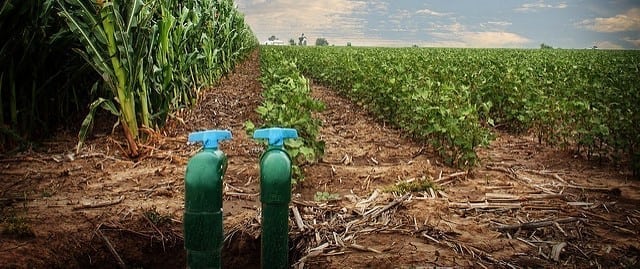One would not imagine a desert being a particularly green place, or a place that produces anything of value. But this, in fact, is far from the truth. With the right resources and tools, as well as a good dose of motivation and persistence, even the driest desert can produce a wealth of plants and useful materials.
Desert farming is nothing new; its history stretches back thousands of years ago. Ancient Native American tribes called the Sinagua (“without water”) Indians and consisting of the Anasazi, Hopi, Zuni, Tewa and other peoples, used to grow different types of corn in the desert. Other native tribes, in the Sonoran Desert for example, relied on seasonal floods and took care to plant their crops downslope, so the flood water would reach them. Other cultures had created special canal systems, hundreds of miles long, to supply water for crops.
Desert Farming in Israel
Modern examples of desert agriculture can be seen in places like California, Australia and Israel. Although a desert covers half of Israel, the precipitation is low and the climate is mostly hot and dry, Israel has become a world-leader in agriculture technologies – precisely because it had to overcome these advantages. Israel produces 95% of its food requirements, and exports many fruits, vegetables and other crops overseas. In fact, one of most important tools in agriculture, the drip irrigation system, was invented in Israel in 1960s. Drip irrigation, now a popular international and Israeli irrigation system, has contributed greatly to efficient water saving and increase in crop yield.
Israel is proof that livelihood can come out of the desert. The country’s first prime minister, David Ben Gurion had said once: “After all, there is room for only one Prime Minister, but for those who make the desert bloom there is room for hundreds, thousands and even millions.” The country has indeed gone on to make the desert bloom. The Negev Desert in the south of Israel has some characteristics which are advantageous to certain crops: large areas of land, high winter temperatures (which make crops ripen faster), extreme temperatures (which are beneficial for some crops), low precipitation (which means fewer disruptions to work), and remoteness from other areas – which lessens the chances of plant diseases and pests being transferred. Some examples for crops grown in the desert are flowers (Israel’s main export), dates and deciduous fruit trees.
Farming at the Dead Sea
At this point you should not be surprised that even the Dead Sea, despite its name, is a place of agriculture. Although it is limited to small areas along the salty lake, due to arid conditions and brackish water, it exists nonetheless. In Megilot Regional Council, an area in the Judean Desert which includes six Israeli settlements near the western shores of the Dead Sea, agriculture is quite well-developed. The main crop of the area is dates; paradoxically, the salty soil produces a sweeter, juicier, more aromatic fruit. Other crops grown in Megilot are pomegranates, bananas, guavas, figs, olives, watermelons, melons, tomatoes, peppers, onions and eggplants.
Other products of the Dead Sea
Of course, it’s not only plants the Dead Sea produces. Its mineral-rich water and mud have made it a wealth of natural resources which have many uses as raw materials. The main minerals farmed from the Dead Sea are potash, bromine and magnesium. It is a relatively easy process, as the Dead Sea is like a natural solution from which they can be produced, and they do not have to be mined from the earth, like in other areas. In addition, the sun’s energy can be used to separate the minerals from the water, a process which usually requires a lot of energy. But the rest of the process is not that simple: potash, for example, is transferred from the sea to a series of artificial pools where the sun evaporates the water and leaves the potash and other compounds; from there it is transferred by barges to Dead Sea factories where it undergoes chemical processes; and then it is processed further to make several different products.
Dead Sea minerals and salt from the Dead Sea are also used for making health and beauty products. Examples of such products are body scrubs made from Dead Sea mud, bath salts, moisturizing cream, facial masks, serums, soaps, shampoos and hair masks. Many people worldwide enjoy the benefits of Dead Sea products, whether they buy them online in cosmetics shops or purchase them on visits to the Dead Sea.


